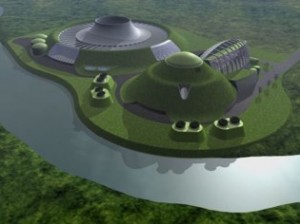Global nuclear markets regaining momentum
More starts than stops
The global nuclear energy market is not a monolith. The truth of this assertion is seen in several recent developments taking place during March. While there were some setbacks, including two German utilities pulling out of the U.K. new build, there are more new starts and even a faster pace at one high profile project.
U.K. takes a step back
Two of Germany's biggest nuclear utilities slated to build Westinghouse 1100-MW AP1000 nuclear reactors at several sites in the United Kingdom have packed up and gone home. E.ON and RWE announced on March 29 that they will not be carrying out business plans worth an estimated $24 billion to build nuclear power stations in the U.K.
The companies said in a joint statement that the "accelerated nuclear phase-out" in Germany has led to a decision to pull back from a number of international investments.
Last year Germany closed eight of its oldest nuclear reactors and scheduled to close the remaining nine by 2022. The two utilities are hard hit by these moves as the reactors were essentially depreciated cash cows that would have provided money for international expansion projects. E.On said in its financial statements that it suffered a 50-percent decrease in profits due to the closure of the older reactors.
UAE nuclear project speeds up
The South Korean consortium building the first of four new nuclear reactors in the United Arab Emirates has trimmed four months off the construction schedule. Assuming all goes well with the regulatory agencies, it plans to pour its first concrete in July 2012 and complete the unit in January 2017.
The speed up in schedule is being facilitated by the pre-positioning of equipment, supplies, and people at the site, which is a remote desert location some 186 miles west of Abu Dhabi. Korea Electric Power Corp. (KEPCO) is leading the $30 billion effort. The Emirates Nuclear Energy Corp. (ENEC) manages it for the UAE government.
Of interest is that the original contract was for $20 billion, but the price has shot up by a third. Financing will involve a mix of cash, and bonds sold to investors, from the UAE, and export credits from South Korea.
In a domestic development in South Korea, Kim Joong-Kyum, chief executive officer of KEPCO, was quoted in late March by wire services as saying that his firm was in talks with ENEC for a new deal to build four additional reactors. ENEC said on April 5, however, in response to these press reports that it is ruling out any new contracts beyond what it already has in place, which are four 1400-MW units.
Saudi Arabia plans electricity exports
The Kingdom of Saudi Arabia (KSA) plans to build 16 nuclear reactors over the next 20 years, spending an estimated $7 billion on each plant. The $112-billion investment, which includes capacity to become a regional exporter of electricity, will provide one-fifth of the Kingdom's electricity for industrial and residential use and, critically, for desalinization of sea water.
In February, top energy officials in KSA told the Bloomberg wire service that domestic needs for electricity are growing at the rate of 2 Gwe/year. State-owned Saudi Electricity Co. sees seven percent growth, but with the construction of new nuclear reactors, it will be able to export electricity to its neighbors as part of the multi-year development cycle.
The plan is to bring the first two reactors by 2020 and then two more a year until the plan is complete. KSA has nuclear cooperation agreements with a number of countries, but has not yet signed a 1-2-3 agreement with the United States.
Despite the pending nature of the significant and sensitive diplomatic relationship, The Shaw Group and Exelon have signed on to a joint initiative through Japan's Toshiba to build two nuclear power plants. It is likely that KSA will select several types of reactors and designs to avoid putting all its eggs in one basket.
India fast tracks next round of reactors
With the Kudankulam twin VVERs back on track, India's NPCIL is clearing the decks to begin development of what eventually will be a 10-GWe power station at Kovvada Matsyalesam. The first stage is to develop a baseline of environmental data for the site. Land acquisition will begin later this year and earth will be moved by the end of 2012.
NPCIL says that each of the reactors planned for the site will be in the range of 1300-1500 MW. The first plant will be completed within 54 months of breaking ground or by mid-2017.
Also, NPCIL is working on a joint venture with the state-owned aluminum company Nalco to set up a second nuclear reactor at one of three potential sites. Nalco would have a 49-percent equity stake in the 1500-MW project, which would supply electricity for its metal smelters and also make it an independent power producer in the region.
South Africa gets ready for nuclear
The South African government is conducting an "Integrated Nuclear Infrastructure Review" as a parallel process to its announcement of an upcoming tender for 9.6 Gwe of new reactors. It is assessing the government's capacity to conduct oversight of construction and regulatory control of safe operations of the new plants.
Energy minister Dipuo Peters said that the exercise has the objective, among other things, to communicate clear signals about the government's intent to proceed with the new build.
At the same time, the government is considering rebuilding its uranium enrichment and conversion facilities that were dismantled 40 years ago. According to a Reuters report for March 2, the country wants to use its domestic uranium deposits to supply an estimated 465 metric tonnes of enriched uranium a year to fuel the new reactors.
------------
Dan Yurman publishes Idaho Samizdat, a blog about nuclear energy, and is a frequent contributor to ANS Nuclear Cafe.







